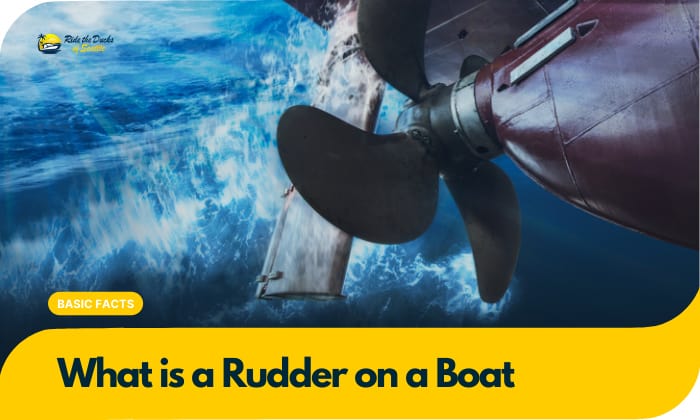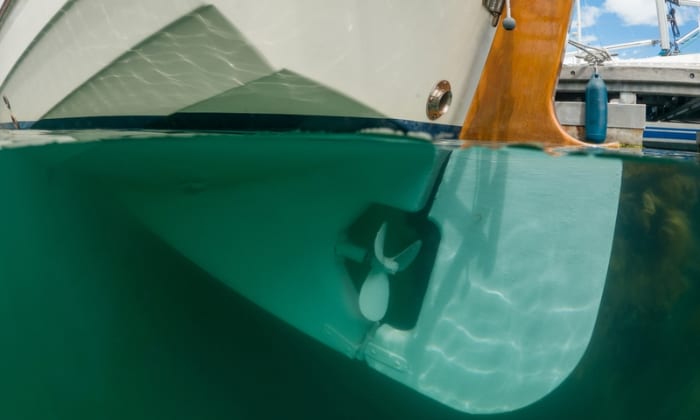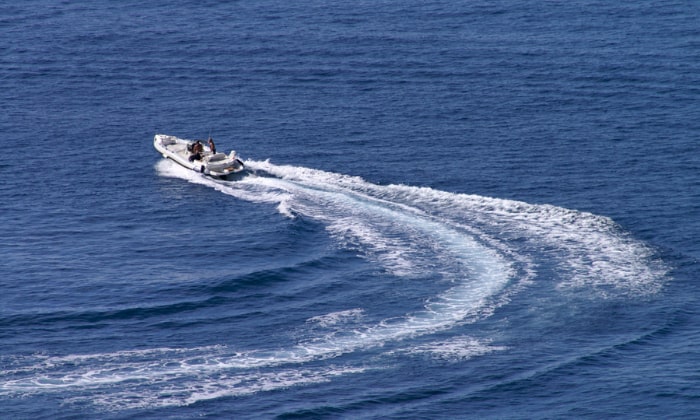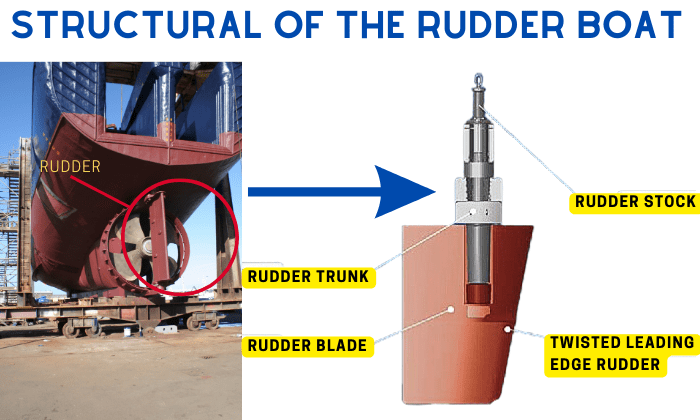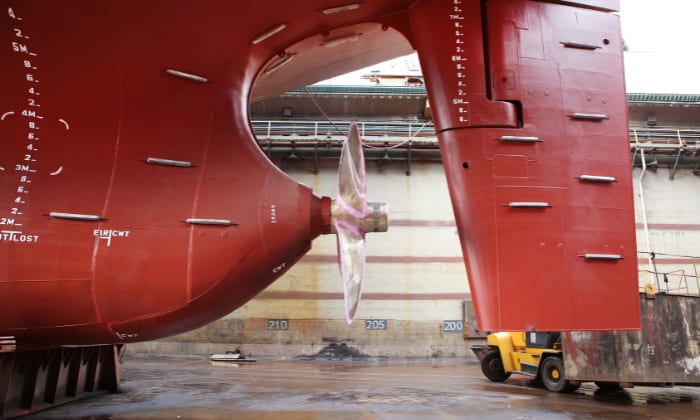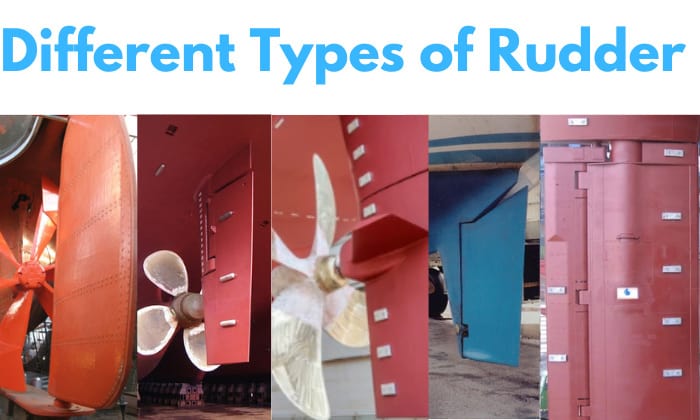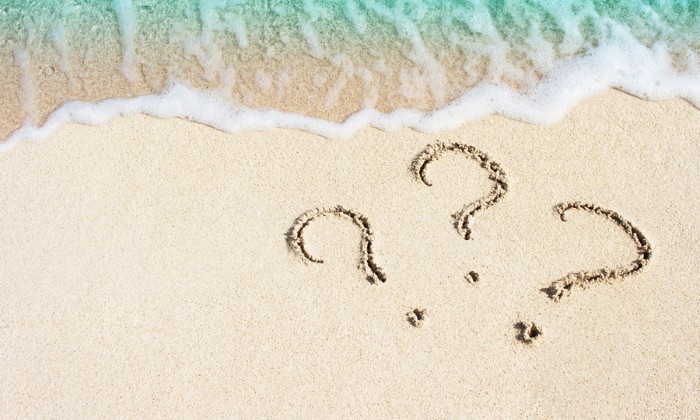Seasoned sailors say controlling a vessel’s directions is easy if you know rudder mechanics and controls. But what is a rudder on a boat? The rudder is a vessel’s equivalent of an airplane’s vertical stabilizer (or tail) rudder, allowing boaters to steer the watercraft left or right.
Please keep reading because more fascinating facts about this integral component of boat or ship steering mechanism await. We will talk about its history, operation, purpose, types, and more.
Let us start learning more about the rudder of a boat or ship.
Table of Contents
Defining the Boat Rudder
Conventional axial rudder definition conjures an image of a vessel’s control surface, allowing the boat or ship to steer in the desired direction. The control surface or “blade” swivels left or right on a vertical axis, hence the name “axial rudder.”
So, what does rudder mean? This term implies a steering component requiring other elements to control its movements or actions.
A History of Vessel Steering
It is challenging to ascertain the answer to the question, “when was the rudder invented?”
- The most definitive answer we found is in the 1st century AD. Han Dynasty Chinese was the first to develop a stern mounted rudder that resembled modern days’ ones.
- However, other experts say the ancient Phoenicians used an oar to steer their watercraft across the Mediterranean between 1550 and 300 BC. Even older are ancient Egyptian claims, featuring specially-designed oars for steering vessels between 2686 and 2134 BC.
That said, it’s worth noting that steering oars, including the ancient ones we mentioned above, do not typify the modern boat rudder. Unsurprisingly, many scholars refute the 2686-2134 BC rudders invention date, underscoring its limited use to small vessels and the tendency to interfere with sail handling.
Thus, although steering oars played a vital role in sternpost rudder development, the consensus regarding the rudders original date of invention is between 202 BC and 220 AD Han Dynasty Chinese with their sternpost-mounted rudder.
- Afterward, this hydrodynamic component allegedly reached Europe and the rest of the world during the Middle Ages thanks to the birth of tourism, massive ecclesiastical reforms, and higher educational expansion.
- In 1843, English mechanical and civil engineer Isambard Kingdom Brunei designed the “balanced rudder” and fitted it into the SS Great Britain. It’s the rudder design we know nowadays, considering it’s remained unchanged ever since.
Purpose of a Boat Rudder
It should be easy to answer the question, “what does a rudder do?” after understanding its fundamental definition. Operating the rudder allows it to move right or left on its axis, changing the vessel’s direction.
However, folks must note that rudders (sternpost or axial) function in other ways as well. For example, some systems guarantee efficient and ultra-smooth treading in the water, while others allow for sharper turns.
Moreover, some rudders ensure optimum operational ease and maximum vessel stability, while others protect watercraft from potential water debris-related damage.
How Do Rudders Work?
The rudder on a ship relies on unequal water pressures.
Imagine the rudder as a board parallel to water movement. Changing the boat rudder direction (i.e., right or left) exposes the blade’s surface to oncoming water flow.
This action increases the pressure on the side directly facing the water flow while reducing pressure on the other side. The resulting unequal pressure pushes the rudder and swings the boat’s hull in that direction.
To turn the rudder of a ship, you can rely on electrical machinery, steam-powered systems, and hydraulic mechanisms. However, small vessels only require a manually-operated handle, usually known as a helm or tiller.
Essential Features
If you present non-boating community members a ship rudder picture, there is a good chance all they see is a simple plane sticking out vertically at the vessel’s bottom rear. However, this vessel steering component has several elements or features that allow it to function as designed.
- Rudderstock – stainless steel, aluminum, carbon fiber, or bronze shaft, rod, or tube connecting the boat’s steering system to the rudder’s “flat plane” or “blade.”
- Rudder log – a rudder supporting element, which the rudder stock passes through.
- Rudder bearings – similar to ball bearings, these components allow the rudder to move across its range of motion.
- Stuffing box – a compartment that contains “heavy, water-resistant grease” for leak prevention and friction reduction that comes from rudder movement.
How to Identify a Boat Rudder
Identifying a marine rudder is not difficult, especially if we know its location. Unlike most vehicles with steering systems controlling the front wheels, a boat’s rudder system is almost always at the stern, which is the vessel’s rear.
Hence, you only need to check this part of the ship to identify a marine rudder. The basic design assumes a “flat blade or plane” hanging from or connected to the sternpost.
The Look of a Marine Rudder
Marine rudders vary in design, depending on several factors. These influences include propeller design, hull form, stern-to-propeller clearance, stern structural arrangement, vessel speed, and hydrodynamic aspects. The final rudder shape, size, and configuration reflect these parameters.
However, most marine rudders have a straightforward look – a large, flat surface, sheet, plate, blade, or fin connected to the vessel at the rear or aft section.
Types of Rudder
Modern vessels feature different rudder types with characteristic design features and functions, as shown below:
1. Balanced rudders
Balanced rudders function best on medium- to large-sized ships that require efficient and steady sailing.
Simply put, it’s a rudder plate with the uppermost part connected to the stock with the bearing inside the hull. In addition, it must be supported with a bottom pintle. A spade rudder is also a sub-category of balanced ones, although it has a longer stock to accommodate the lack of a pintle on its underside.
The difference between these two designs is that balanced rudders with a supporting pintle are mostly used for single-screw ships, whereas spade rudders can go with either single- or twin-screw vessels.
2. Unbalanced rudders
This type of rudder has its blade length supported by a rotation axis or rudder stock. Its blade is exposed to bending moments, while its steering gear is what provides the turning torque.
In most cases, unbalanced rudders can only be found on small boats that call for the ability to make tight turns, such as watercraft for skiing.
3. Semi-balanced rudders
This marine rudder design marries the remarkable benefits of balanced and unbalanced rudder systems. It’s called its name because only its lower half is what keeps the balance in its design (meaning the lower half doesn’t rotate on a rudder stock axis).
The most noticeable benefit of semi-balanced rudders is their responsiveness, making steering the vessel much easier and smoother – you don’t even need to exert too much force to turn the rudder.
4. Skeg-mounted rudders
Used for better vessel protection against debris collision and impact due to its structural strength, the skeg-mounted rudder is also available in unbalanced, balanced, and semi-balanced ones. Although somewhat difficult to turn, it’s suitable for both single- and twin-screw ships.
5. Flap rudders
These rudders feature a hydraulically or mechanically activated trailing edge flap-integrated blade. It allows boats to improve their maximum lift by up to 70%, ensuring exceptional maneuverability.
Frequently Asked Questions
Can you steer a boat without a rudder?
Yes, you can steer a boat without a rudder. However, the solutions are not as efficient and effortless as a rudder.
Most boaters would tie a drogue, sail bag, or several buckets on a line and drag them behind the boat. This setup will allow some degree of steering and reduce the watercraft’s speed.
You can also improvise with a door or floorboard, lashing it on the vessel’s exterior transom via a spinnaker pole.
How much does it cost to rebuild rudder?
Rebuilding a boat rudder can cost you about $3,500, depending on various factors. For example, you can expect more than 140 hours to rebuild the rudder. Multiplying this by $8 to $9 an hour puts the bill at $1,120. Some rudder rebuilders might charge more.
The materials can cost about $1200, plus an extra $200 to $250 for repairing the fiberglass sections next to the rudder. Rudder fabrication can cost you around $1,100 but can be costlier depending on the fabricator.
Is tiller same as rudder?
No, a tiller differs from a rudder. The former is a manually-operated handle or rod connecting to the rudder. You can find this component in transom- or outboard-type rudders.
Conclusion
What is a rudder on a boat? Although ascertaining its “date of invention” can be daunting, a rudder’s simplest definition is a vertical plane or blade that skippers or helmspeople manipulate to change a vessel’s heading or course.
Rudders might have come from humble beginnings as steering oars, but 19th-century innovations gave rise to modern rudder designs. We cannot imagine a 21st-century watercraft without a rudder. After all, it is an integral steering system component.

Ten years of enjoying countless trips on boats never made me love them any less! So I am here to put all those experiences into good use for other boaters who want to have a safe and fun trip with their friends and families.

